by Craig Brelsford
Founder, shanghaibirding.com
Distinguishing non-breeding Nordmann’s Greenshank from Common Greenshank is a tricky task, but one that reaps rewards. With practice you too can feel the rush that comes when you realize that the greenshank you are viewing is not one of the most common shorebirds in Eurasia, but one of the rarest. At Cape Nanhui in Pudong, our team experienced that thrill, picking out a Nordmann’s in a roost holding a few hundred shorebirds.
We noted the following:
• Tibiae of Nordmann’s Greenshank are noticeably shorter than those of Common Greenshank.
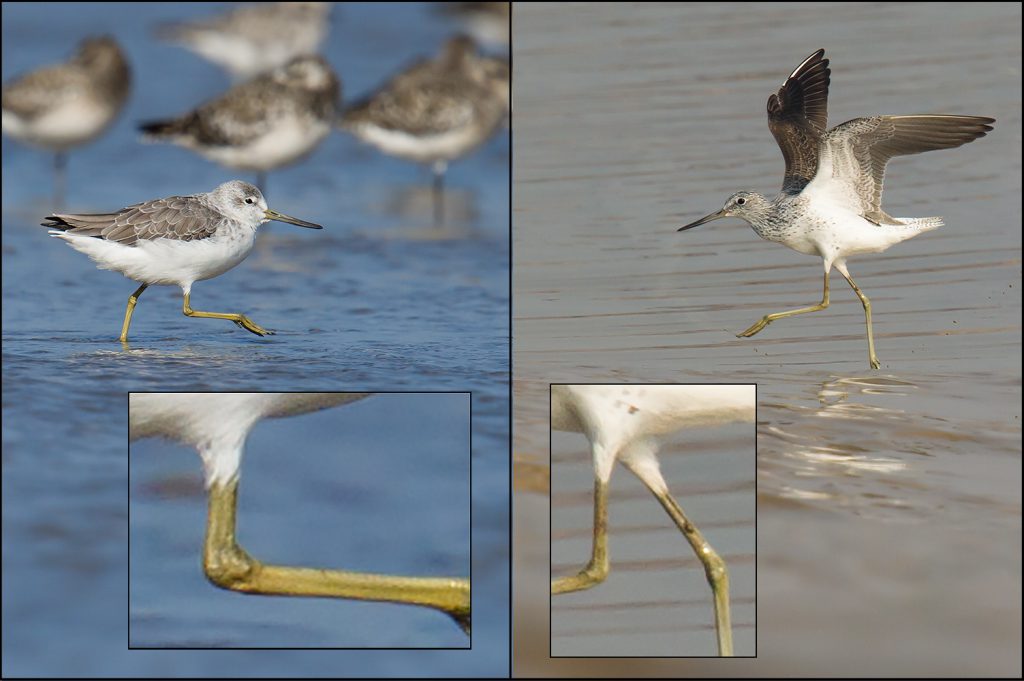
The picture above makes it clear. The biggest reason Nordmann’s is known as the stockier bird, the rugby player compared to the ballerina that is Common Greenshank, is tibia and leg length.
• Nordmann’s has a thicker neck that it often holds closer to its body and has a pronounced ventral angle (protruding belly), giving Nordmann’s a more hunched appearance than Common.
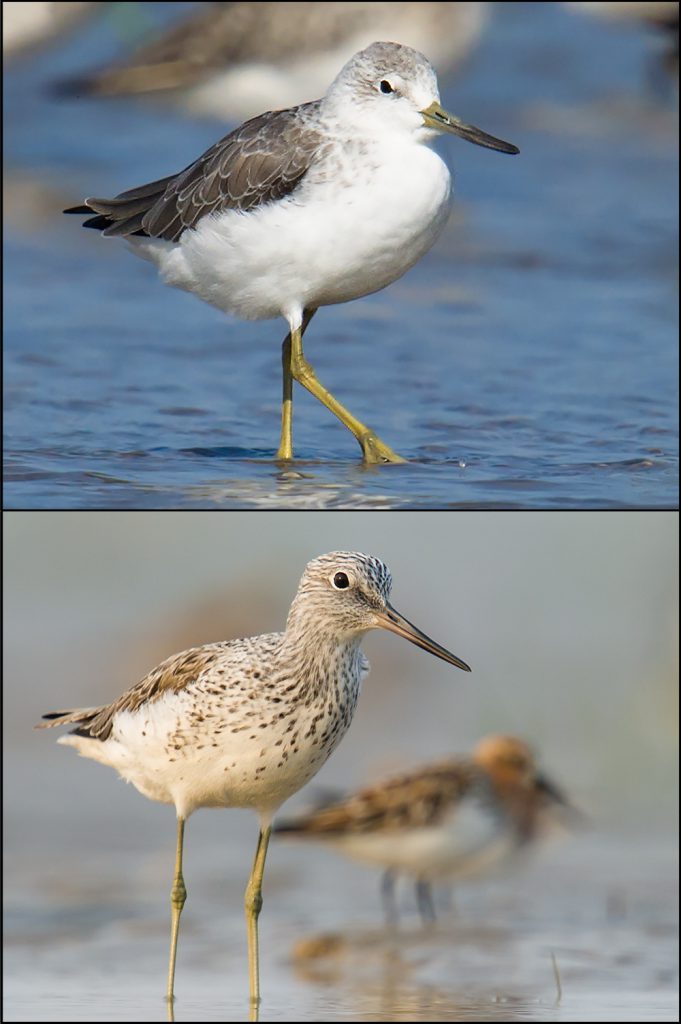
As with many of the characters of these species, the hunched stance of Nordmann’s is not always obvious, especially when the bird is active. Likewise, even a Common sometimes can appear stout. But as one’s observation time grows, the classic features of both species emerge.
• Nordmann’s has a thicker, more obviously bi-colored bill than Common.
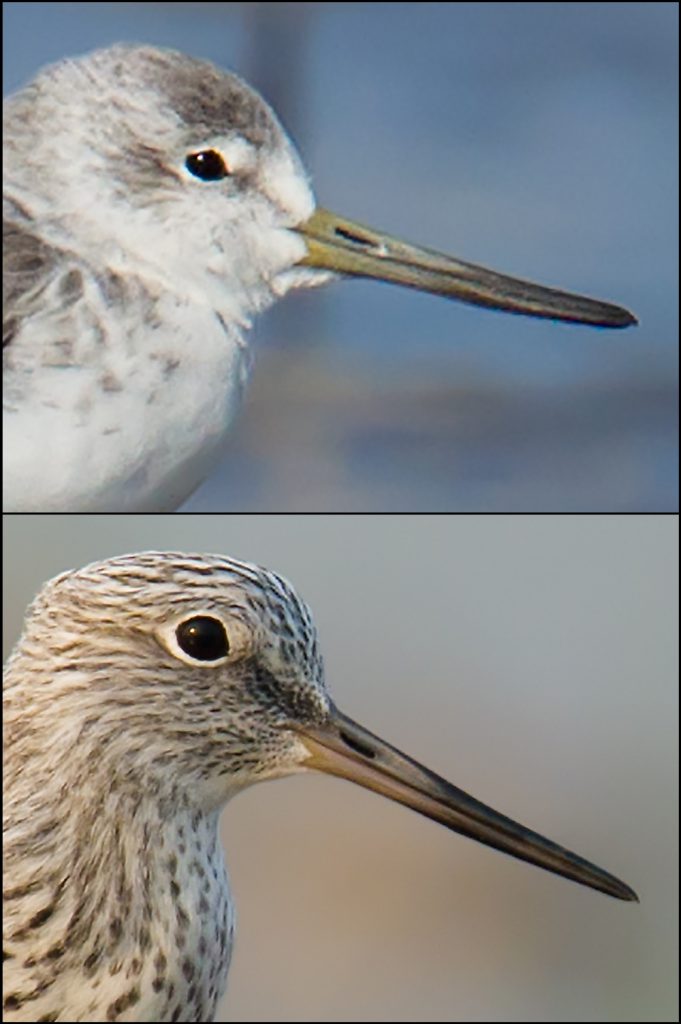
Because the Nordmann’s at our Nanhui roost did not fly, we missed the following key characteristics:
• The toes of Nordmann’s project just beyond the tail-tip; the toes of Common project farther.
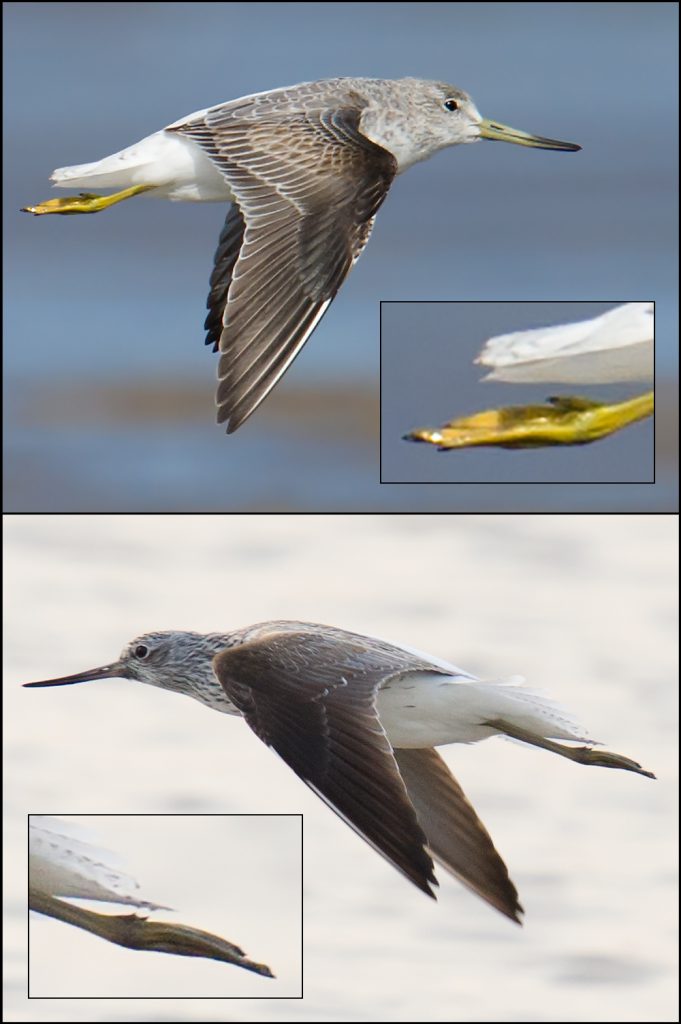
This difference can be subtle, and a good camera is sometimes needed to appreciate it. But it is consistent.
• Nordmann’s has a cleaner tail and underwing than Common.
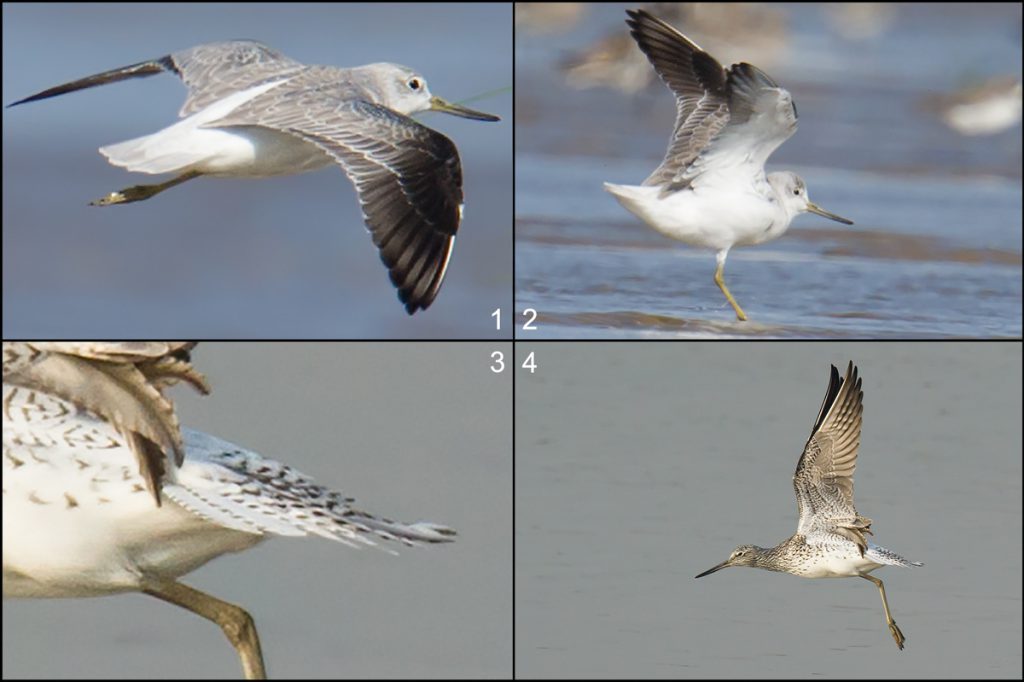
Even if your Nordmann’s is roosting, you can sometimes note the white underwing. Wait for the bird to stretch out its wing.
Other differences:
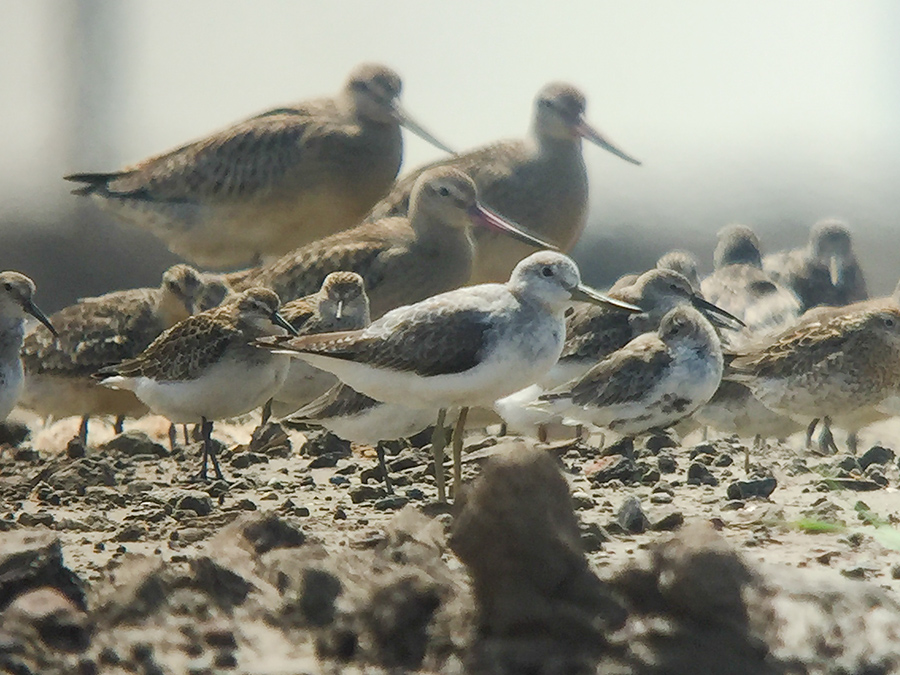
• The calls of Nordmann’s Greenshank and Common Greenshank are markedly different. The well-known chew-chew-chew call of Common is never made by Nordmann’s.
• In breeding plumage the species are more readily distinguishable.
Nordmann’s Greenshank is also known as Spotted Greenshank for good reason. The heavily spotted underparts of breeding Nordmann’s are diagnostic. Unfortunately for birders in Shanghai, however, Nordmann’s in full breeding plumage is rarely seen.
Nordmann’s Greenshank Tringa guttifer is an endangered species. Only 500 to 1,000 of these birds are thought to remain. Development along the East Asian coast is the main reason for its decline. Nordmann’s breeds in Russia, passes through China, and winters in Southeast Asia. It is present in the Shanghai area for several months each year.
Featured image: Nordmann’s Greenshank stands among wader roost at Cape Nanhui, Shanghai. Using the principles described in this post, our team was able to ID this Nordmann’s. (Komatsu Yasuhiko/Craig Brelsford)

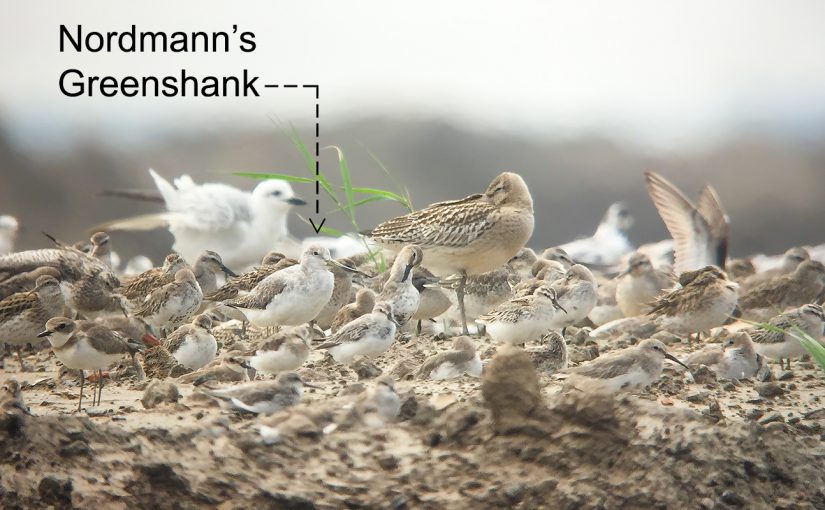
Hi Craig
Excellent article.
Just a question. Can you specify the location in Nanhui where the picture of the banner of the present page has been shot (the one with the multiple birds on the mud flat)?
Many thanks
Hi Louis, and thanks for writing. As noted in the post, we found the Nordmann’s Greenshank and other waders at 30.920549, 121.963247. Drive 4.2 km north from the Holiday Inn along the sea-wall road and make a left onto the road leading inland. Drive inland on that road a few hundred meters.
Great article, very practical and useful.
Well, I always had doubts but the rest of my group were sure the photo linked to below was a Nordmann’s. I may be wrong but comparing this bird to your excellent pages I believe it to be a Common Greenshank. Hopefully you can shoot me down in flames, what do you think?
https://www.shanghaibirding.com/wp-content/uploads/2020/05/greenshank-lathbury.jpg
Sorry about the poor quality of the photo’s crops from a bird a fair distance away.
Taken in Thailand last December.
Hi Paul, thank you for reading shanghabiirding.com, and thank you for writing in. Your greenshank does not strike me at all as a Nordmann’s. The bill is not obviously bi-colored, I see no pronounced ventral angle, and the knuckle is far down the leg. It’s Common.
Thank you for helping me get my lifer it was a great help to me.
This proved very handy for me while identifying this particular bird. Beautiful piece. Thanks a lot!!
Dear Sir,attaching 2 pictures.pl.say something about it.pictures were clicked in april 22 at kutch gujarat india.bill looks thick and curved.pl.give your opinion sir. how to attach photo or ssend email adress please
thanks
Thanks for writing. Please send pictures to info@shanghaibirding.com.